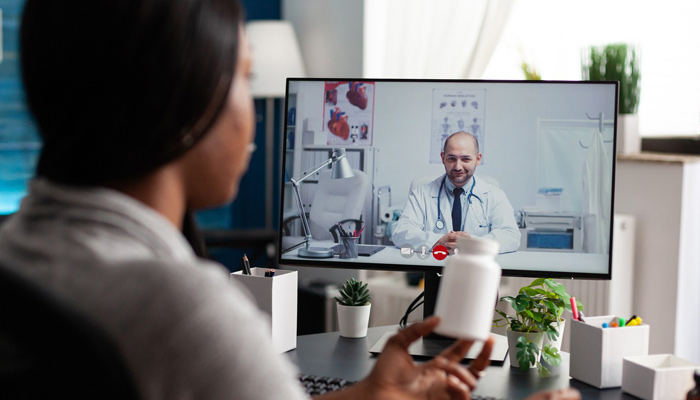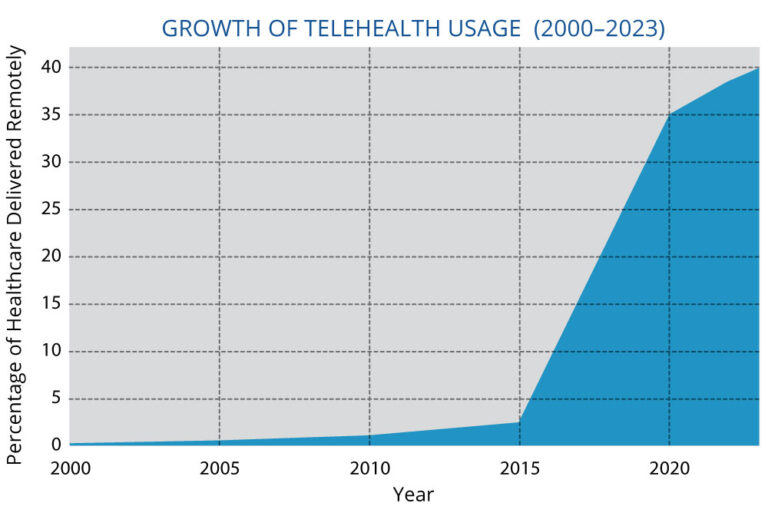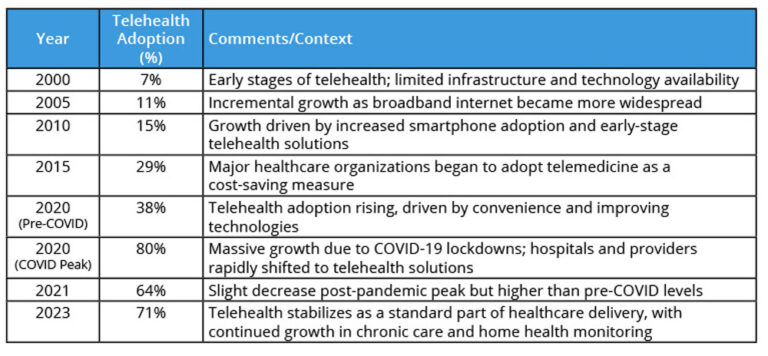
The Growing Trend Towards Telemedicine and Home Care
The COVID quarantine accelerated the adoption of technology and new care models, but we’ve only seen the beginning.
The landscape of healthcare has shifted significantly in recent years with telemedicine and home care playing increasingly prominent roles. Digital innovations like video chat, connected devices and home diagnostic kits enable remote diagnosis, monitoring and treatment, improving access to healthcare for millions of patients worldwide.
Telemedicine Growth
Telemedicine has seen a slow, steady rise over the past two decades, but it was the COVID-19 pandemic and the resulting quarantine that catalyzed its widespread use. In 2020 alone, the usage of telehealth services increased by more than 2,000%, according to the Centers for Disease Control and Prevention (CDC) [1]. Initial adoption led to rapid acceptance; virtual encounters saw a 75% increase—growing from approximately 111.4 million in 2020 to nearly 194.4 million in 2021 (NIH) [2]. Pre-pandemic estimates placed telemedicine usage at around 10% of all medical consultations; however, by 2023, nearly 30% of healthcare interactions were delivered remotely and nearly 40% of adults have utilized telehealth solutions in the past year alone.


Beyond convenience, telemedicine offers financial benefits. A Journal of Telemedicine and Telecare study found that remote care, particularly for chronic conditions, reduces costs by up to 50% compared to traditional in-person visits [3]. However, concerns have also been raised about the potential for overuse—with 15% of virtual consultations leading to in-person follow-up visits—and other abuses have been noted regarding drug prescriptions and lack of regulatory oversight.
While a clear regulatory framework is still under construction, the opportunity has attracted investment attention.The success of companies like Teladoc Health, which went public in 2015 and has since grown into a multi-billion-dollar enterprise, showcases the growing investment in telehealth [4]. In 2022, Amazon’s acquisition of One Medical for $3.9 billion further underscored the tech industry’s increasing interest in healthcare solutions [5].
Future of Home Care
The increase in remote healthcare monitoring has sparked renewed interest in home care—particularly for chronic disease management. Studies show that combining virtual care with in-person home visits improves outcomes for conditions like diabetes and heart disease [6]. Moreover, Medicare has expanded coverage for home visits, signaling a shift toward more comprehensive care models [ 7].
As healthcare costs continue to rise, telemedicine and home care are poised to play an even larger role. With significant investments and policy changes underway, these trends will reshape how care is delivered globally and we will be watching with interest.
Cited:
[1] CDC: Trends in the Use of Telehealth During the Emergence of the COVID-19 Pandemic — United States, January–March 2020
[2] Unveiling the Adoption and Barriers of Telemedicine in US Hospitals: A Comprehensive Analysis (2017-2022)
[3] Determining if Telehealth Can Reduce Health System Costs: Scoping Review
[4] Teladoc raises $157M in first IPO for mobile-enabled video visits
[5] 1 year after Amazon-One Medical deal finalized: What’s happened since
[6] Telemedicine Linked to Health Care Cost Savings, Improved Quality
[7] Medicare telehealth flexibilities





